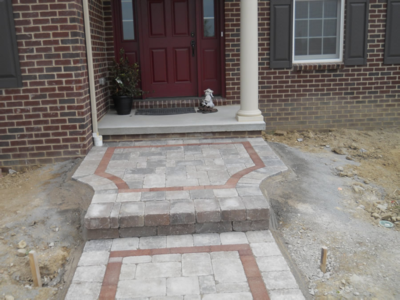Polymeric Sand: The Pros and Cons
 If you’ve been making plans for a paving stone project, then you’ve probably noticed that there’s some debate between contractors, landscapers, and even homeowners in regards to the optimal materials to use. One of the real sticking points is whether you should or shouldn’t use polymeric sand. What is polymeric sand exactly? Polymeric sand is a granular material placed between the joints and seams in brick pavers used in patios, walkways and some driveways. We, at Paver Maintenance, have cobbled together some information on polymeric sand and will share it below.
If you’ve been making plans for a paving stone project, then you’ve probably noticed that there’s some debate between contractors, landscapers, and even homeowners in regards to the optimal materials to use. One of the real sticking points is whether you should or shouldn’t use polymeric sand. What is polymeric sand exactly? Polymeric sand is a granular material placed between the joints and seams in brick pavers used in patios, walkways and some driveways. We, at Paver Maintenance, have cobbled together some information on polymeric sand and will share it below.
The pros:
Often cited benefits of using polymeric sand are as follows: It works to combat problems by not only binding the paving stones together, but by retaining their flexibility.
This type of sand is said to be element resistant, and the manufacturer boasts it can be power washed after being properly cured.
It has been known to work well at discouraging grass and weeds from springing up in the cracks between pavers.
Some tout polymeric sand as the ideal option for filling the joints between paving stones. Most often they will be pointing to the benefits mentioned here while noting its relatively low cost.
The cons:
Although quite popular, polymeric sand doesn’t come without its fair share of drawbacks as well.
It’s been said that some of the sand manufacturers add cement to their mix to reduce the total cost of making the product. This corner cutting can lead to the cement content staining the pavers and causing a white/light gray film near the seams.
The easy installation, do-it-yourself feature of polymeric sand was designed to make it easy to use for non-professionals without proper equipment, and as such comes with additional drawbacks.
Polymeric sand is easy to install, mainly because of its extra fine particle size that allows it to easily fall down into the paver joints. One of the keys to a successful pave job is for large/course particle sand to get forced into the joint of the stone to achieve a solid connection. In the case of this particular sand, it’s simply not happening.
While some contractors will swear by polymeric sand, the trend of our opinion tends to see cons outweighing pros of using Polymeric Sand. But every consumer has the freedom to choose as they see fit, and in some cases, a cheaper (albeit lower quality) option makes sense. The bottom line is that when considering any home improvement project, focusing on the small details such as what type of filling sand to use will likely make the difference between satisfaction and disappointment.
If you are in the greater Detroit area and are looking for a paving contractor we would be happy to write you an estimate, or simply share our expertise by answering your questions. We are based in Oakland and Macomb counties, but serve the entire Detroit metro area. Call us at:1-800-BRICK-PAVERS today!
